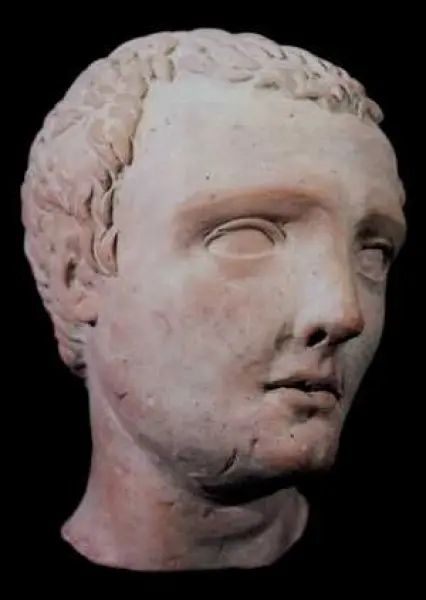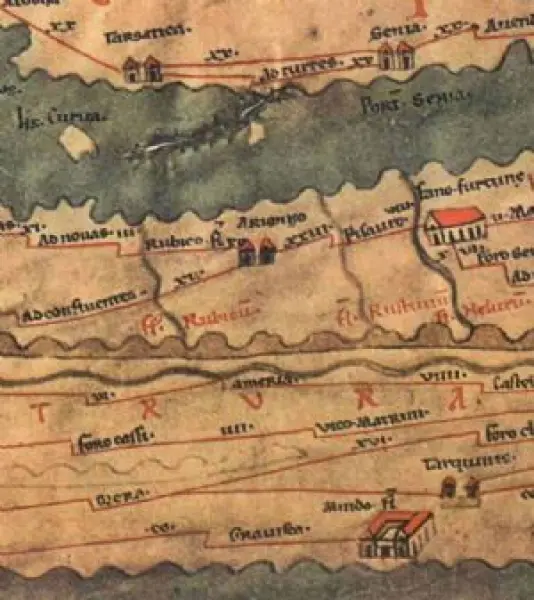Visita all'Antiquarium di Cesenatico
Visita all'Antiquarium di Cesenatico
La prima sala, la più piccola dell'Antiquarium di Cesenatico , è dedicata ai reperti romani e agli oggetti ritrovati dai ragazzi delle scuole durante esperienze di scavi condotti insieme ad equipes di archeologi. Si notano alcune anfore in terracotta e oggetti d'uso quotidiano.
La seconda sala, più grande, raccoglie gli oggetti più importanti e comprende anche i reperti di età romana che appartenevano al nucleo originario del museo. Parecchi reperti provengono da scavi condotti nel territorio limitrofo sottoposto alla centuriazione romana, iniziata dopo la fondazione di Ariminum, odierna Rimini, nel 268 a.C.. Tra le carte geografiche esposte si trova anche una riproduzione della Tavola Peutingeriana che riporta il sistema viario antico con la via Popilia sulla quale è indicata Ad Novas.
Gli scavi condotti nel 2008 (da una delegazione archeologica internazionale in cui ha collaborato l’Universita’ di Leicester "School of Archaeology & Ancient History" il Comune di Cesenatico e la Soprintendenza ai Beni Archeologici dell’Emilia-Romagna) nell'area agricola intorno a Cesenatico hanno riportato alla luce diverse ville rustiche, antiche tenute agricole destinate alla coltivazione, all'allevamento e alla produzione di vino. Tra i diversi strumenti raccolti si nota un cippo miliare frammentario e la grande macina per il grano in pietra lavica che attesta la presenza di un mulino.
Nel Podere Zavalloni sono stati recuperati ampie zone di mosaici pavimentali, laterizi, pavimenti in cotto e decorazioni in marmo appartenenti ad un antico complesso costruttivo, una statuetta di Dioniso del II secolo d. C. e numerosi oggetti e strumenti della vita quotidiana come anfore, vasellame, monete, tessere musive e mattoni. In un'altra area è stata ritrovata una necropoli con tombe alla cappuccina e in anfora. Tra i reperti dei corredi delle tombe sono state ritrovate anche statuette per riti funebri.
In un'altra zona denominata Ca' Turchi sono state ritrovate le tracce di antiche fornaci romane composte da più forni che furono attive per diversi secoli e produssero laterizi e materiali per l'edilizia, vasi, anfore, piatti, lucerne, elementi decorativi e anche statue, come si desume dai due raffinati frammenti del II secolo a. C. probabilmente raffiguranti Dedalo e Icaro. La qualità artistica e la delicatezza di lavorazione di questi ultimi pezzi indicano l'alto livello artistico dei ceramisti locali, attenti conoscitori dello stile contemporaneo presente in Italia Centrale.
La terza sala è dedicata ai reperti provenienti dalle fortificazioni scomparse. La Rocca medievale venne eretta per la difesa del porto nel 1302, presso la foce del fiume Pisciatello. Ebbe un importante ruolo stratetico e fu più volte rovinata e ricostruita in seguito agli eventi bellici. Venne definitivamente distrutta dai soldati tedeschi in ritirata nel 1944. La Rocca è conosciuta anche attraverso i rilievi effettuati da Leonoardo da Vinci, in un suo breve soggiorno a Cesenatico nel 1502. In un recente intervento archeologico sono state riportate alla luce le fondamenta della rocca e parte del rivestimento in pietra d'istria.
Della Torre Pretoria, costruita nel 1589 sul molo di Levante per difendere il porto dalle incursioni dei pirati rimangono alcuni frammenti, mentre le fondamenta si trovano sotto la pavimentazione dell'attuale Piazza Ciceruacchio.
Altro edificio di carattere militare ora scomparso era il Fortino napoleonico, costruito dalle truppe francesi nel 1811. Ma avuto una breve esistenza, poichè nel 1866 venne completamente smontato dai cittadini di Cesenatico e utilizzato come cava per materiale da costruzione.
Nel 1981, durante i lavori di pulitura del canale è stato ritrovato un "tesoretto": diverse monete d'argento del XVI e XVII secolo ora esposte in una vetrina della sala.
A. Cocchi
Visiting the Antiquarian of Cesenatico

Icarus. Fragment of Roman statue from the 2nd Century A.D.
Terracotta. Antiquarian of Cesenatico.
The first room, the smaller of the Antiquarium of Cesenatico, is dedicated to the Roman findings and to objects found by schoolchildren during an excavation experience together with an archaeological team. Here we can see amphorae in terracotta and some house tools.
The second room, the biggest, houses the most important objects and includes the Roman age objects that belonged to the original unit of the museum. Many findings come from excavations that took place in the neighbouring areas that were subject to the Roman land division, initiated after the foundation of Ariminum in 268 B.C., today Rimini. A reproduction of the Tavola Peutingeriana (Peutinger table) is among the geographical maps in exhibition, showing the old road network with the Via Popilia and Ad Novas.

The tavola Peutingetiana (Peutinger table) where Ad Novas is shown
The excavations that took place around the agricultural area of Cesenatico in 2008 (an international archaeological delegation with the collaboration of the "School of Archaeology & Ancient History" from the University of Leicester, the Town Council of Cesenatico and the Soprintendenza ai Beni Archeologici dell’Emilia-Romagna) brought to light many rustic houses, old estates used for farming, breeding and producing wine. Among the tools found, there was a fragmented memorial stone and a big grain millstone in lava stone, which suggests the presence of a windmill.
In the Zavalloni land, large areas of paving mosaic have been uncovered, as well as bricks, tile floors and marble decorations that belonged to an old building complex, plus a statue of Dionysius from the 2nd Century A.D. and several objects and tools of everyday life as amphorae, crockery, coins, tesserae and bricks. In another area a necropolis has been found, with cappuccina and amphora tombs. Among the tomb's accoutrements, statues for funeral rites were also found.
In another area called Ca' Turchi, traces of old Roman kilns were found, consisted of several units that were active for centuries and produced bricks and building materials, vases, plates, oil lamps, decoration and statues, as can be assumed by the refined fragments from the 2nd Century A.D. probably depicting Daedalus and Icarus. The artistic quality and the delicate work of these last pieces indicate the high artistic level of the local ceramists, careful connoisseurs of the contemporary style from Central Italy.
The third room is dedicated to the findings coming from disappearing fortresses. The Medieval Rocca (Medieval Fortress) was built for the defence of the harbour in 1302, near the mouth of the river Pisciatello. It had an important strategic role and it was destroyed several times by war events and later rebuilt. It was then completely destroyed by retreating German soldiers in 1944. The Rocca is also known from the reliefs made by Leonardo da Vinci, during his brief stay in Cesenatico in 1502. In a recent archaeological intervention, the foundation of the fortress was uncovered as well as part of an Istrian stone.
From the Torre Pretoria (Pretoria Tower), built in 1569 on the east pier to defend from the pirates, some fragments remain, while the foundation is now found under the paving of the Piazza Ciceruacchio.
Another building of military character and now gone is the Fortino Napoleonico (Napoleonic Fort) built by the French troupes in 1811. It had a very short life since it was completely taken apart in 1866 by the citizens of Cesenatico and used as a quarry for building material.
In 1981, during the cleaning works of the canal, a little "treasure" was found: several silver coins from the 16th and 17th Centuries, now in a window display of this room.
A. Cocchi
Trad. A. Sturmer
Bibliografia
B. Ballerin, Rocca, torre e fortino del Cesenatico. in: Romagna arte e storia n. 49, 1997, Editrice Romagna arte e storia, Rimini 1997
F. Santucci, Cesenatico, da porto di Cesena a Comune Edizioni Il ponte vecchio, Cesena, 1995
D. Gnola, Storia di Cesenatico Edizioni Il ponte vecchio, Cesena, 2001
D. Gnola, Cesenatico nella storia Edizioni Il ponte vecchio Cesena, 2008
M. Marini Calvani (a cura di), Schede di Archeologia dell'Emilia-Romagna, Bologna 1995
B. Farfaneti, Cesenatico romana. Archeologia e territorio, Ravenna 2000
C. Dondi Il porto di Cesenatico lo pensò Leonardo? in:www.bper.it/gruppobper/incontri
AA. VV.Quaderno da viaggio. Provincia di forlì-Cesena. Luoghi e incontri, arte e cultura dal mare all'appennino.
P. Fabbri. La pianura e i lidi romagnoli. Guide d'Italia. Fabbri Editori, Milano 1982
M.Tedeschini (a cura di) Cesenatico. In: Atlante Romagnolo. Dizionario alfabetico dei 76 comuni. Il Resto del Carlino.



